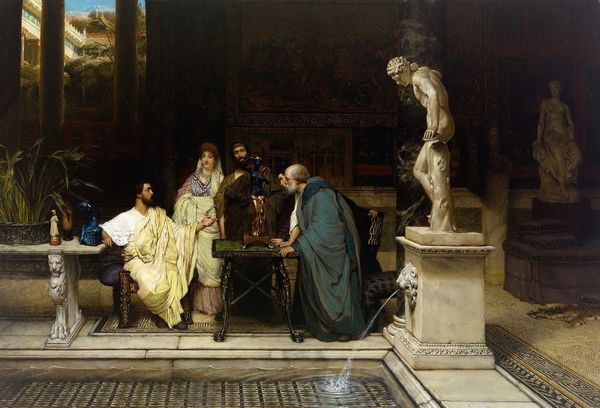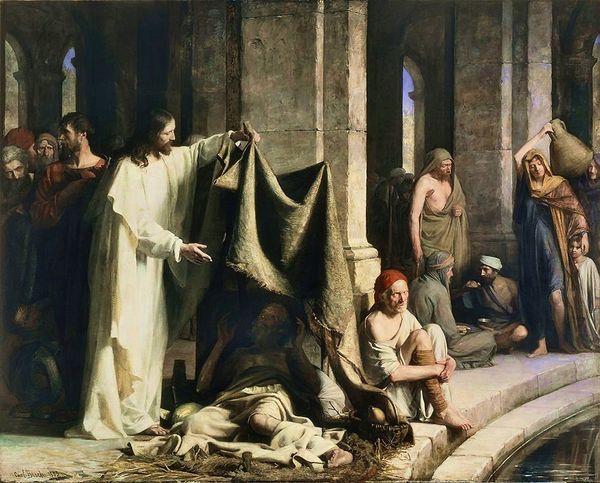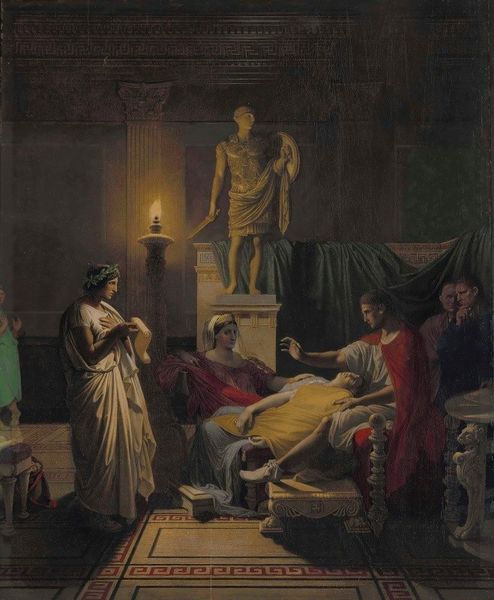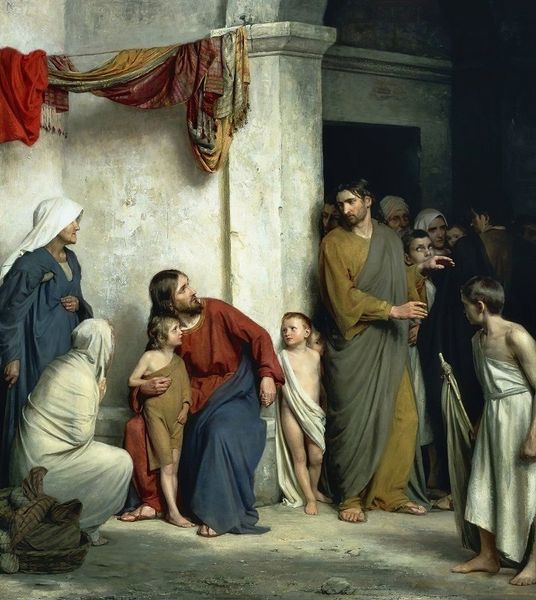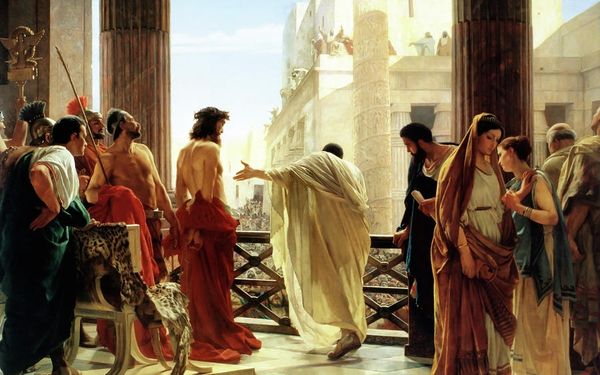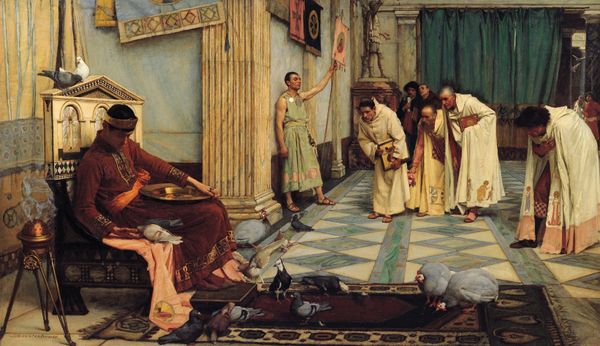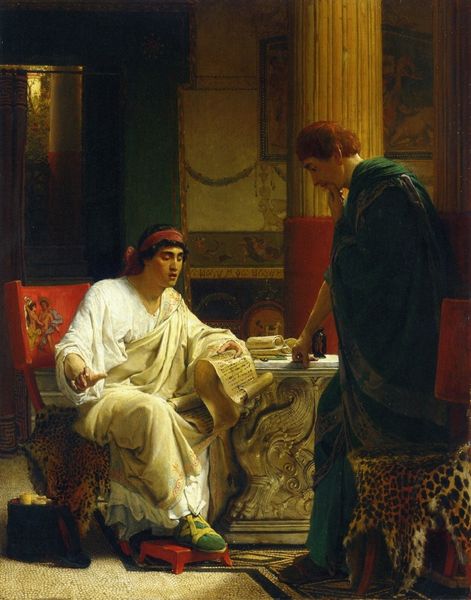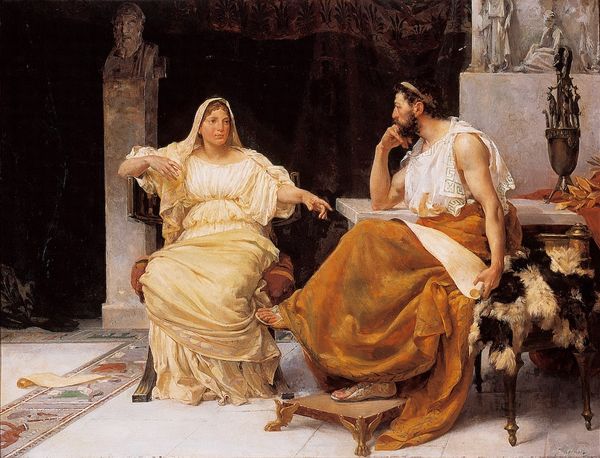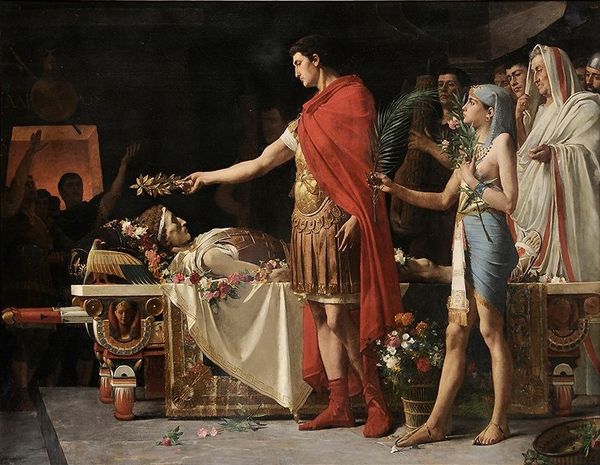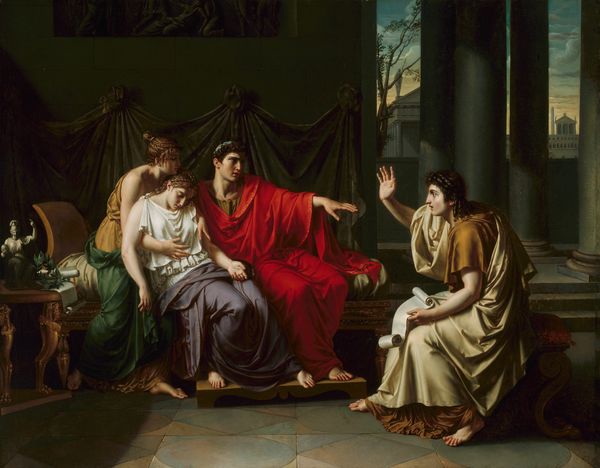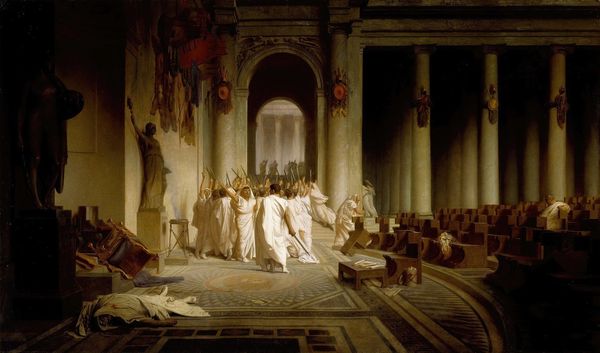
The Visit of a Sick Child to the Temple of Aesculapius 1877
0:00
0:00
johnwilliamwaterhouse
Private Collection
painting
#
portrait
#
painting
#
landscape
#
historical fashion
#
roman-mythology
#
classicism
#
cultural celebration
#
traditional dress
#
mythology
#
history-painting
#
academic-art
Dimensions: 208 x 170 cm
Copyright: Public domain
Editor: Here we have John William Waterhouse’s 1877 oil painting, "The Visit of a Sick Child to the Temple of Aesculapius." It’s a grand interior scene, rendered with such precision, but there’s also a slightly melancholic atmosphere hanging in the air. What strikes you about the composition? Curator: I am drawn to the spatial arrangement of the figures. Waterhouse constructs a stage-like space where the actors are carefully positioned. Notice how the cool marble tones contrast against the warm colors of the clothing, further setting off a separation within the space. This technique lends a certain gravity to the overall scene. Editor: Yes, I noticed that too! The people on the left of the painting look much more muted than the priest, who is rendered in light colours. Could this emphasis be meant to suggest that hope is alive within the temple? Curator: Precisely. We observe the contrast between the static pose of the father versus the child's delicate position on the left. This deliberate counter positioning accentuates an opposition between worldly resignation and transcendent optimism, further highlighted by a careful selection of colors throughout the canvas. Do you notice the formal qualities of the garment in relation to how it impacts movement? Editor: I do see the folds and contours of the fabric do look like how garments appear on antique statues. It’s quite an intriguing observation that the folds of fabric on the statues appear static, similar to the stiff and subdued nature of the subjects’ garments! What kind of symbolism do you notice on the setting? Curator: A structuralist reading can decode these compositional components as mirroring states of mortal health versus pious supplication within an architectural framework. Waterhouse skillfully organizes these motifs to reveal core aspects within life through form itself. Editor: I see that the temple setting really amplifies those ideas. It’s amazing how much analysis you can glean just by studying shapes and structure! I'll keep all this in mind in the future. Curator: And remember, form communicates meaning through visual language alone; understanding that grammar enables interpretations exceeding first glance.
Comments
No comments
Be the first to comment and join the conversation on the ultimate creative platform.
